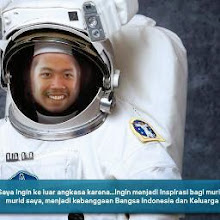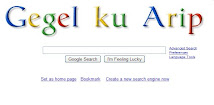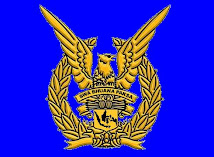The
Royal Swedish Academy of Sciences has decided
to award the Nobel Prize in Physics for 2009 with one half to
Charles K. Kao
Standard Telecommunication Laboratories, Harlow, UK, and Chinese University of Hong Kong
Standard Telecommunication Laboratories, Harlow, UK, and Chinese University of Hong Kong
"for groundbreaking achievements concerning the transmission of
light in fibers for optical communication"
and the other half jointly to
Willard S. Boyle and George E. Smith
Bell Laboratories, Murray Hill, NJ, USA
Bell Laboratories, Murray Hill, NJ, USA
"for the invention of an imaging semiconductor circuit – the CCD
sensor"
The masters of light
This year's Nobel Prize in Physics is awarded for two scientific
achievements that have helped to shape the foundations of today’s
networked societies. They have created many practical innovations for
everyday life and provided new tools for scientific exploration.
In 1966, Charles K. Kao made a discovery that led to
a breakthrough in fiber optics. He carefully calculated how to transmit
light over long distances via optical glass fibers. With a fiber of
purest glass it would be possible to transmit light signals over 100
kilometers, compared to only 20 meters for the fibers available in the
1960s. Kao's enthusiasm inspired other researchers to share his vision
of the future potential of fiber optics. The first ultrapure fiber was
successfully fabricated
just four years later, in 1970.
Today optical fibers make up the circulatory system that nourishes
our communication society. These low-loss glass fibers facilitate global
broadband communication such as the Internet. Light flows in thin
threads of glass, and it carries almost all of the telephony and data
traffic in each and every direction. Text, music, images and video can
be transferred around the globe in a split second.
If we were to unravel all of the glass fibers that wind around the
globe, we would get a single thread over one billion kilometers long –
which is enough to encircle the globe more than 25 000 times – and is
increasing by thousands of kilometers
every hour.
A large share of the traffic is made up of digital images, which
constitute the second part of the award. In 1969 Willard S.
Boyle and George E. Smith invented the first
successful imaging technology using a digital sensor, a CCD
(Charge-Coupled Device). The CCD technology makes use of the
photoelectric effect, as theorized by Albert
Einstein and for which he was awarded the 1921 year's Nobel Prize.
By this effect, light is transformed into electric signals. The
challenge when designing an image sensor was to gather and read out the
signals in a large number of image points, pixels, in a short time.
The CCD is the digital camera's electronic eye. It revolutionized
photography, as light could now be captured electronically instead of on
film. The digital form facilitates the processing and distribution of
these images. CCD technology is also used in many medical applications,
e.g. imaging the inside of the human body, both for diagnostics and for
microsurgery.
Digital photography has become an irreplaceable tool in many fields
of research. The CCD has provided new possibilities to visualize the
previously unseen. It has given us crystal clear images of distant
places in our universe as well as the depths of the oceans.
| Read more about this year's prize |
| Information for the Public (pdf) |
| Scientific Background (pdf) |
|
To read the text you need Acrobat
Reader.
|
| Links and Further Reading |
Charles Kuen Kao, British and US citizen. Born 1933
in Shanghai, China. Ph.D. in Electrical Engineering 1965 from
University of London, UK. Director of Engineering at Standard
Telecommunication Laboratories, Harlow, UK. Vice-chancellor, Chinese
University of Hong Kong. Retired 1996.
www.ieeeghn.org/wiki/index.php/Oral-History:Charles_Kao
www.ieeeghn.org/wiki/index.php/Oral-History:Charles_Kao
Willard Sterling Boyle, Canadian and US citizen.
Born 1924 in Amherst, NS, Canada. Ph.D. in Physics 1950 from McGill
University, QC, Canada. Executive Director of Communication Sciences
Division, Bell Laboratories, Murray Hill, NJ, USA. Retired 1979.
www.science.ca/scientists/scientistprofile.php?pID=129
www.science.ca/scientists/scientistprofile.php?pID=129
George Elwood Smith, US citizen. Born 1930 in White
Plains, NY, USA. Ph.D. in Physics 1959 from University of Chicago, IL,
USA. Head of VLSI Device Department, Bell Laboratories, Murray Hill, NJ,
USA. Retired 1986.
www.ieeeghn.org/wiki/index.php/Oral-History:George_E_Smith
www.ieeeghn.org/wiki/index.php/Oral-History:George_E_Smith
Prize amount: SEK 10 million. Kao is awarded one half, Boyle
and Smith share the other half.
Contact persons: Erik Huss, Press Officer, Phone +46 8 673 95 44, mobile +46 70 673 96 50, erik.huss@kva.se
Annika Moberg, Editor, Phone +46 8 673 95 22, Mobile +46 70 263 74 46, annika.moberg@kva.se
Contact persons: Erik Huss, Press Officer, Phone +46 8 673 95 44, mobile +46 70 673 96 50, erik.huss@kva.se
Annika Moberg, Editor, Phone +46 8 673 95 22, Mobile +46 70 263 74 46, annika.moberg@kva.se
























No comments:
Post a Comment